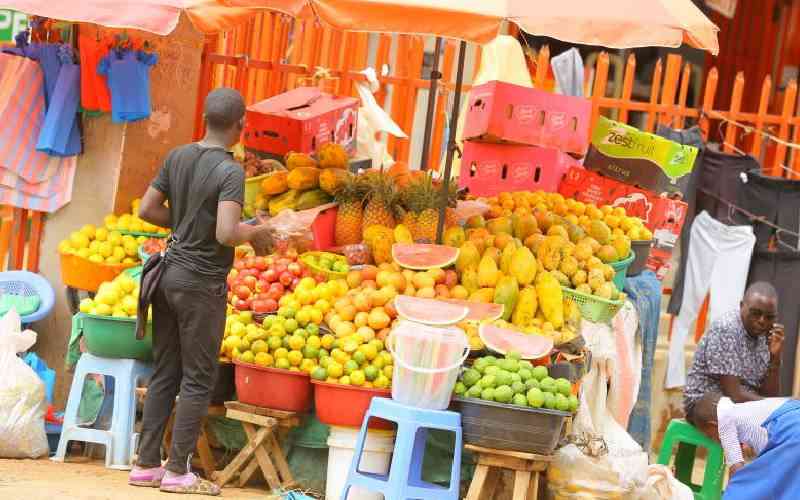
The future of miraa and muguka farming in Mount Kenya region is facing an uncertain future as farmers explore ways to overcome the ongoing crisis following the ban of the commodity in a number of counties.
Miraa or khat, and muguka, are popular stimulant crops predominantly grown in parts of Meru and Embu.
Farmers of both stimulants, traders, transporters and others in the value chain have lived off the crops’ proceeds for decades.
But some counties and countries have banned the two crops on the belief that they are drugs, a position that stakeholders in Meru and Embu vehemently oppose.
The latest setback in efforts to promote miraa and muguka is the recent ban on muguka in Mombasa by Governor Abdulswamad Nassir, an action which was replicated by his Kilifi counterpart Gideon Mung’aro.
Miraa only became recognised as a legal crop by the government in 2016, when the then-President Uhuru Kenyatta allocated the sector Sh1 billion to assist farmers.
Some jurisdictions, including countries, classify it as a drug, but in Meru, it is considered a herb or food.
- Free healthcare to benefit children in Mombasa: Nassir
- Beyond the politics, here is what science says about miraa, muguka
Keep Reading
Farmers and leaders, such as former Nyambene MP Joseph Mutuuria, who is nearly 90, regards it as medicine, and chews it on a daily basis.
Scientific evidence
They say those who ban it have no scientific evidence that it is harmful.
Apart from water and sunlight, miraa requires little maintenance and a healthy plant is harvested regularly.
Fresh twigs have cathinone and later, the chemical composition breaks down to form cathine when the leaves are no longer fresh, mostly after 48hrs.
Past studies revealed cathinone’s effects on the central and peripheral nervous system and behaviour.
Concerns had been raised regarding the levels of harm miraa is producing with emerging trends showing that it has become a divisive issue in various jurisdictions with very little consensus on the nature and extent of use and related harm.
Former Igembe North MP Joseph Eruaki, who is the chairman of Kenya Plant Health Institute (KEPHIS), regards it highly.
“There are many varieties of miraa and we need scientific research to come up with understanding of those varieties, where they are grown and where they can grow best,” Eruaki said.
He says there is need for research on the ecological zones that are best suited for various varieties of the crop.
“When you have a miraa institute it can help the farmers so that they are encouraged to grow varieties according to the ecological zones,” Eruaki added.
Dr James Mithika, a doctor-cum miraa farmer and trader, said the levels of cathine and cathinone in the two stimulants vary.
“Muguka has more cathine which has a long shelf life and greater effects on the brain. Miraa is a scheduled crop, muguka is not,” Mithika said.
Mithika said a miraa research institute was long overdue.
“In the Sh1b Miraa Fund established by former president Uhuru Kenyatta, Sh30m was set aside for the Miraa Research Institute. The thinking was that miraa, having been anchored in the Crops Act, required a proper scientific study to identify the varieties, appropriate pesticides, fertilisers and farming methods that are ideal,” Dr Mithika said.
Separate crops
This was to assure local and foreign consumers of the quality and wholesomeness of the product, he explained.
“The institute would also come up with proper packaging materials or methods that meet standards for consumables. The end result of such intervention through research, would be wide market acceptability, improved quality and quantity, credible information on the crop to counter the stereotypes and effectively improve income to farmers,” Mithika said.
Nyambene Miraa Farmers and Traders Association chairman Kimathi Munjuri said there was need for a comprehensive research on miraa to enable its growth, marketing and value addition.
Munjuri said miraa and muguka needed to be gazetted as separate crops to enhance planning for both.
“They have specific challenges which will be addressed better if they are listed separately,” he said.
Munjuri said part of the reason muguka is eating into the traditional miraa market is because it is “more affordable”.
“Muguka has taken some bit of the miraa market share.”
The National Campaign Against Drug Abuse (NACADA) angered miraa farmers when it tried to regulate consumption.
Muguka is predominantly grown in some parts of Embu County, especially Mbeere. While muguka is readily available in the streets, and chewed by low-income earners, miraa is largely consumed by those considered the elite.
Muguka farmers such as Benson Murithi said they were facing challenges in marketing, especially outside the country, where the crop is yet to be recognised.
Yesterday, a number of leaders said the ban on muguka was a big blow to the region and will worsen poverty levels.
Embu Governor Cecily Mbarire revealed that muguka contributes approximately Sh22 billion annually to her county, and Sh1 million daily to Mombasa county, saying the ban will affect revenues and livelihoods in both counties.
“This comes after we met the Governor of Mombasa and members of the Mombasa County Assembly on 15th May 2024, where we established a joint working team to ensure compliance with the product’s trade regulations and deal with the issues raised,” Mbarire said in a press statement.
Cultural reasons
She noted that there is no law separating miraa from muguka, which she said is a variety of miraa by taste, product, and active ingredient carthinone present in all varieties, adding that the scheduled crop is khat and miraa, and that muguka is the local name for khat.
“The crop is Catha edulis that represents all varieties of miraa which includes muguka and any other crop that may emerge and contains Catha edulis,” she said.
Miraa and muguka are regarded as special commodities by communities that have grown them for decades for income and cultural and social reasons.
Miraa grown mainly in Meru is the premium quality khat while muguka grown in lower parts of Embu is reputed for its affordability and the “quick kick” it gives chewers.
Miraa was banned in some parts of Europe, including UK whose government classified it as a drug.
The ban of the crop in high-value export markets resulted in a significant drop in incomes for hundreds of thousands of people in Igembe and Tigania regions, where up to 90 per cent of the land is occupied by the crop.
Speaking in Siakago, Mbeere North MP Geoffrey Ruku took a swipe at Coast leaders for banning a crop that is recognised by Kenyan laws.
Drug barons
Ruku alleged that drug barons were using the leaders to ban muguka which, he claimed, had pushed hard drugs out of the market because it’s cheap and legal.
The MP said muguka had brought substantial development in Mbeere where it is a source of livelihood to many families.
“Muguka is a cultural indigenous crop protected by the Kenyan constitution to be sold anywhere in Kenya and that’s why we are moving to the courts,” he said.
Chairman Mberembu Farmers Cooperative Union Jerevesius Nyombayekothe said the ban will affect more than 100,000 farmers in Embu, noting that farmers in 18 other counties grow muguka.
“This is a community issue and banning muguka is tantamount to eradicating a whole community that solely depends on the stimulants,” he said.
At the Muraru open-air market in Mbeere South, 50-year-old Damaris Muthoni, a mother of nine, said they have engaged in muguka farming and consumption for more than 20 years with no side effects.
Meru Senator Kathuri Murungi says miraa supports 500,000 people in Meru.
 The Standard Group Plc is a multi-media organization with investments in media platforms spanning newspaper print
operations, television, radio broadcasting, digital and online services. The Standard Group is recognized as a
leading multi-media house in Kenya with a key influence in matters of national and international interest.
The Standard Group Plc is a multi-media organization with investments in media platforms spanning newspaper print
operations, television, radio broadcasting, digital and online services. The Standard Group is recognized as a
leading multi-media house in Kenya with a key influence in matters of national and international interest.











